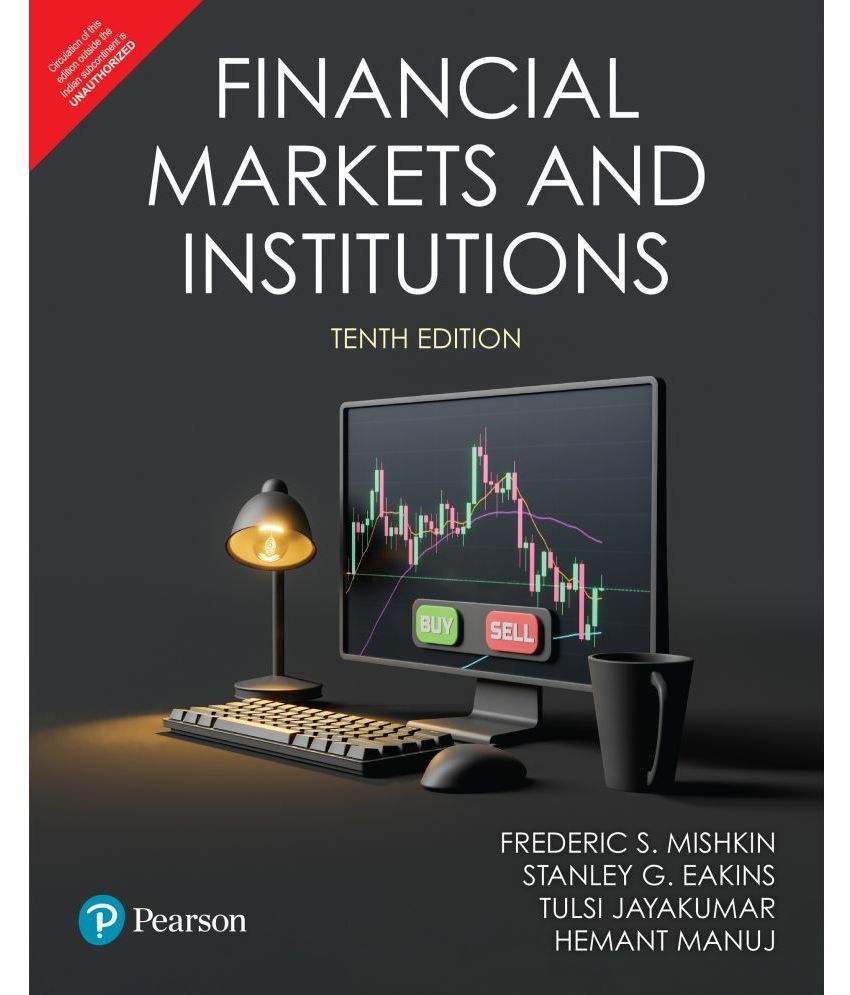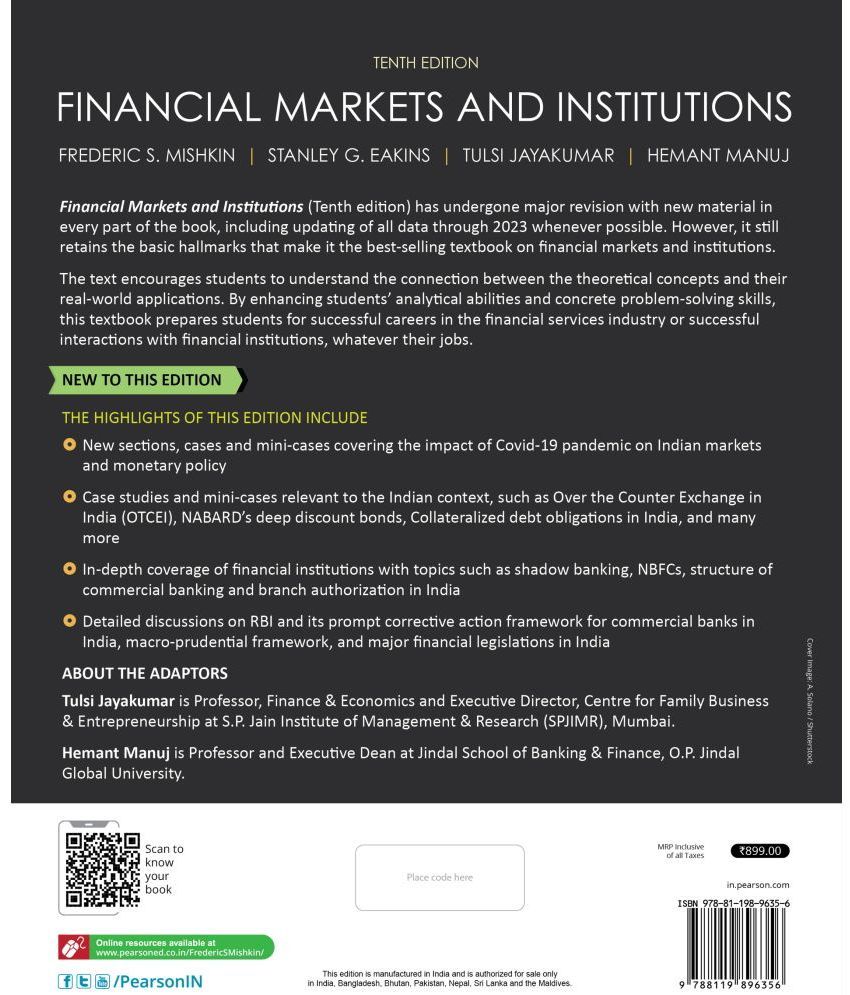Financial Markets and Institutions (Tenth edition)> has undergone major revision with new material in every part of the book, including updating of all data through 2023 whenever possible. However, it still retains the basic hallmarks that make it the best-selling textbook on financial markets and institutions.
The text encourages students to understand the connection between the theoretical concepts and their real-world applications. By enhancing students’ analytical abilities and concrete problem-solving skills, this textbook prepares students for successful careers in the financial services industry or successful interactions with financial institutions, whatever their jobs.
New This Edition –
1. New sections, cases and mini-cases covering the impact of C-19 pandemic on Indian markets and monetary policy
2. Case studies and mini-cases relevant to the Indian context, such as Over the Counter Exchange in India (OTCEI), NABARD’s deep discount bonds, Collateralized debt obligations in India, and many more
3. In-depth coverage of financial institutions with topics such as shadow banking, NBFCs, structure of commercial banking and branch authorization in India
4. Detailed discussions on RBI and its prompt corrective action framework for commercial banks in India, macro-prudential framework, and major financial legislations in India
About the Author
Frederic s. Mishkin Graduate School of Business, Columbia University
Stanley G. Eakins East Carolina University
Tulsi Jayakumar is Professor of Finance & Economics and Executive Director of, Centre for Family Business & Entrepreneurship at S.P. Jain Institute of Management & Research (SPJIMR), Mumbai.
Hemant Manuj is a Professor and Executive Dean at Jindal School of Banking & Finance, O.P. Jindal Global University.
Contents –
PART 1: Introduction –
1. Why Study Financial Markets and Institutions? 2. Overview of the Financial System
PART 2: Fundamentals of Financial Markets -
3. What Do Interest Rates Mean, and What Is Their Role in Valuation? 4. Why Do Interest Rates Change? 5. How Do Risk and Term Structure Affect Interest Rates? 6. Are Financial Markets Efficient?
PART 3 Fundamentals OF Financial Institutions –
7. Why Do Financial Institutions Exist? 8. Why Do Financial Crises Occur, and Why Are They So Damaging to the Economy?
PART 4: Central Banking AND The CONDUCT OF Monetary Policy –
9. Central Banks and the Reserve Bank of India (RBI) 10. Conduct of Monetary Policy
PART 5: Financial Markets –
11. The Money Markets 12. The Bond Market 13. The Stock Market 14. The Foreign Exchange Market 15. The International Financial System
PART 6: The Financial Institutions Industry –
16. Banking and the Management of Financial Institutions 17. Financial Regulation 18. Banking Industry: Structure and Competition
PART 7: The Management OF Financial Institutions –
19. Risk Management in Financial Institutions 20. Hedging with Financial Derivatives Glossary Index Guide to Commonly Used Symbols




